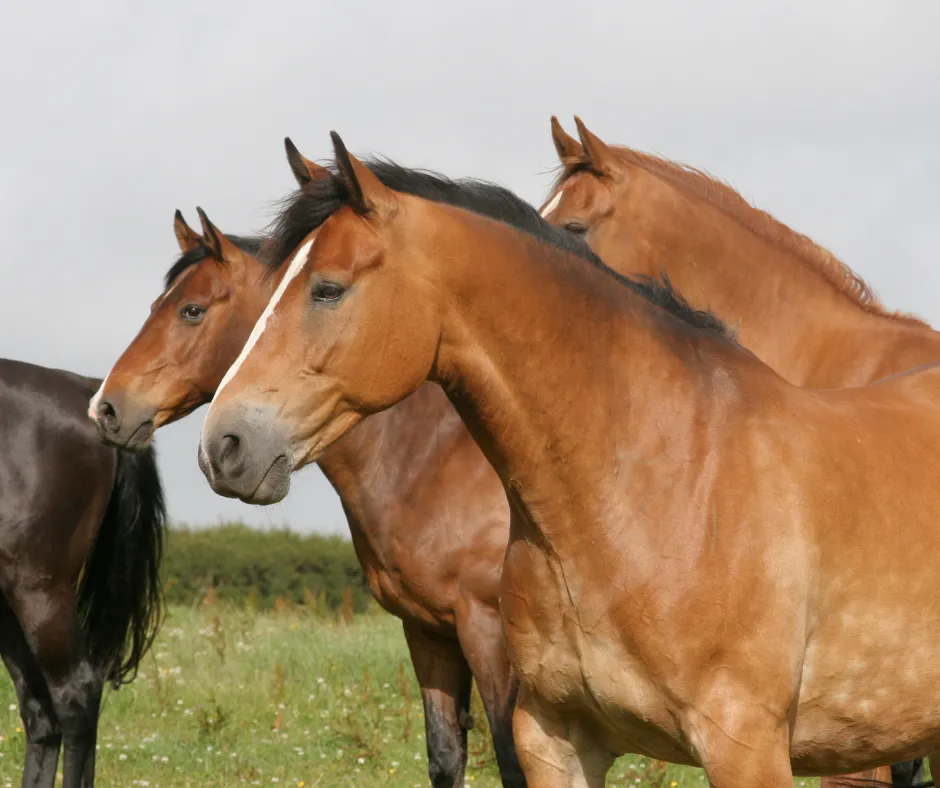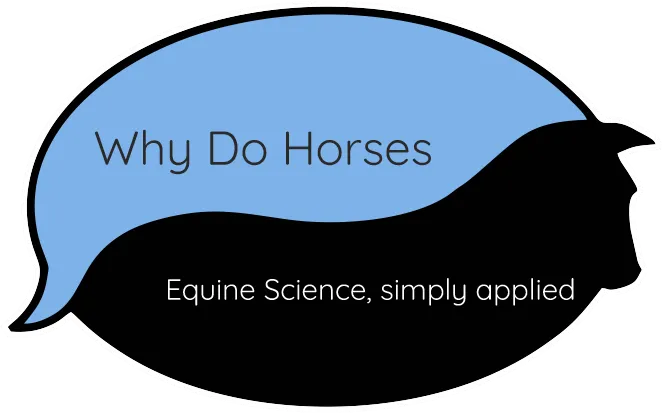Articles
As a keen Equine Science Writer, I have had a number of articles published in the equestrian media over the years. You can find them (and more) here!

Sticking Together: Group Cohesion in Horses
Sticking Together: Group Cohesion in Horses
Group living and social interaction are important for horses. The benefits of herd living have been widely studied, particularly in relation to security and fight or flight behaviour, but how important is group cohesion to horses and how do they maintain it?

Group Living and Social Structure
Horses are largely non-territorial and live naturally in groups forming stable relationships. They share their space and resources with one-another and so harmony within the group is important. Equine social structure is based on bilateral relationships which can vary depending on the situation or resource. The dominant or submissive position of each horse within the herd extends only so far as its relationship with another group member. A horse's position within the bilateral relationship can be different depending on the resource itself. For example, in domestic horse relationships, priority access to hay may be different to priority access to water. Whilst the idea of an organised top-down herd hierarchy is unfortunately persistent in the horse industry, it is unlikely that horses are aware of the social order of other equine relationships within the group overall. Horses often develop closer relationships with others of a similar age and rank, with these horses becoming preferred associates.
Maintaining Social Position
Horses use a combination of agonistic and affiliative behaviours to maintain their social position.
Agonistic behaviour relates to aggressive encounters and refers to threat, attack, retreat or appeasement. Types of agonistic behaviour include nudging another horse away, threatening to kick or bite; chasing, and actual bites or kicks.
Christensen and colleagues examined how group living, versus single stabling, affected the social behaviour in young stallions. The team studied a total of 19 two-year-old stallions. The horses were kept in their respective housing for 9 months, before being turned out in two separate enclosures. Scientists monitored the social interactions of each group, finding ultimately that more aggressive behaviour was displayed by the group which had previously been singularly housed, than that of the group housed horses. The singularly stabled stallions showed more inclination towards using threats to bite, as well as physical bites themselves. However, the group housed stallions tended to use more subtle displays of agonistic behaviour, such as causing a horse to retreat and submissive mouth snapping.
Developing and maintaining an established social order decreases the amount of injury sustained, because, once understood, threats can then replace physical attack.
Horses maintain their social relationships with affiliative "friendly" behaviours - the two most important being play and allogrooming (commonly referred to as mutual grooming). In addition to reducing social tension and enhancing equine bonding, allogrooming has also been found to reduce heart rate and levels of stress hormone cortisol.
Social networks
As well as forming close bonds with preferred partners, horses take an active preference towards being close to particular individuals whilst resting and grazing.
Interestingly, during the study carried out by Christensen and colleagues, researchers noted that the formerly group-housed horses associated more with their own group members, however the single-housed horses did not show a preference for their former neighbours. Since the singularly-housed-horses could both see and smell their neighbours, but did not associate with them during turnout, the researchers suggested that bodily contact is an important component in establishing social relationships.
As well as establishing these relationships, maintaining social networks is also important to horses. Beyond simply sustaining their own social position, research demonstrates that horses actively seek to conserve relationships with one-another, not just for their own benefit but also for the group as a whole.
A study by VanDierendonck and colleagues showed that maintaining pair bond relationships is important to horses. Over two summers, the team studied a group of free-ranging Icelandic horses for over 1300 hours. During the second summer, the researchers introduced 8 unknown horses into the group and observed how this affected the social relationships of the Icelandic horses. The researchers found that when preferred partners were seen to be allogrooming with the unknown horses, the original group members actively sought to intervene in interactions which carried the potential to jeopardise their own social alliances.
Conflict resolution is also an important factor for maintaining harmony within the group.
Cozzi and colleagues carried out a study which examined how horses behaved towards one-another following a conflict situation. The team observed a stable herd of 7 horses for 108 hours. Using video footage, researchers gathered evidence on how the horses behaved in the 10 minutes immediately following a conflict. During this period, horses were seen to display affiliative behaviours such as allogrooming, sniffing the other horse, playing and friendly contact. Interestingly, the researchers found that, not only did pairs of horses make attempts to reconcile following a conflict, third-party horses also stepped in to assist in the reconciliation of belligerent herd-mates. Of the horses studied, all seven acted as a third-party at some point and were observed both consoling the victim and appeasing the aggressor.
Research indicates that group cohesion is important to horses and that they actively seek to maintain harmony within the herd. Equally, behaviourists are concerned that focus on agonistic encounters can distort understanding of how horses manage their relationships. Many scientists believe that horses largely use avoidance techniques to sustain their position and that, rather than aggression, hierarchy is based more on attachment and tolerance.
This article has been edited since initial publication to allow for updates in research

Blog Posts Straight to Your Inbox!
What do clients say?

Amy D

We had an intro session on clicker training with Louise, it was fabulous, very informative. After reading up about clicker training and getting a bit confused with all the different approaches, Louise made it very clear and explained it all thoroughly.

Eiddwen S

I contacted Why Do Horses for help with issues I was having travelling my horse. During our sessions I found myself wanting to learn more about equine behaviour and body language and I have realised I was missing a lot of knowledge. Why Do Horses have changed my entire outlook on horse training and behaviour, this is something for which I will be forever grateful!

hello@whydohorses.com
07700 166060
© 2024 Why Do Horses - All Rights Reserved.

